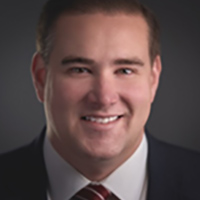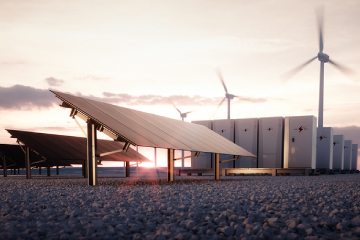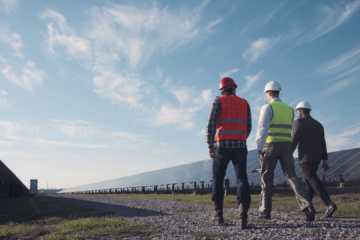- Why EDF power solutions?
- About UsAbout UsWe’re committed to providing future generations with the means to power their lives in the most economic, environmental and socially responsible ways possible.
- What We DoWhat We DoWe are a market-leading, independent power producer and service provider, delivering: wind (onshore and offshore), solar photovoltaic, storage, and electrical vehicle charging.
- Landowners
- Suppliers
- Projects
- Careers
- News
- Contact
Transparency is Essential

Successful renewable energy project development depends on earning peoples’ trust
By Jack Honor, Senior Development Manager, Grid-Scale Power
Developing a renewable energy project can take years, require you to serve in multiple roles, dash your hopes with unexpected pitfalls, demand long hours and late nights, and put your people skills to the test – and I love it.
In my career as a solar developer, I’ve worked on projects across the country that range from residential scale to 350 megawatts (MW) in size. Something that’s held true across all these experiences is that relationships are one of the most important ingredients in a project’s success.
I’m one of two senior solar developers responsible for growing EDF Renewables’ presence in New York State. We’ve increased the company’s New York solar development pipeline from just two projects a few years ago to more than ten projects totaling 2,000 MW today. Building this pipeline has meant earning the trust of individual landowners as well as the projects’ host communities, something to which I’m deeply committed.
“Relationships are one of the most important ingredients in a project’s success.”
As a senior developer, I’m responsible for a broad scope of activities that touch virtually every aspect of a project up to the beginning of construction. For a greenfield project, the process begins with a three-to-six-month prospecting phase that includes conversations with local landowners and towns to gauge their interest in participating in a solar project.
Our New York pipeline is a mix of greenfield projects and early-stage projects we acquired from local development partners. Teaming up with local partners enables us to tap into their knowledge and experience on the ground and provides continuity for landowners and the community.
Once a project moves past the prospecting phase, things start to take shape. Building on the discussions held in the first stage, we strive to provide as much information as we can to stakeholders. We host open houses, held virtually during the pandemic, to share the proposed project’s footprint, explain how the technology works, present visual simulations of what it will look like and how we’ll mitigate impacts to the local viewshed, and outline the environmental and economic benefits.
We also present this information at town meetings, and field questions from residents and board members alike. This can be one of the more challenging aspects of my job, but it’s also one of my favorites, because it means I must understand and be able to explain almost everything about solar energy projects. I always answer every question as thoroughly and completely as possible and follow up with additional information if needed.
Throughout the development process, my goal is to demonstrate that EDFR is a dependable, reliable and transparent partner. Having trust-based relationships with individuals and communities is critical to the success of any project, and I want people to know I will be forthcoming with information and do the right thing. I stand by my word and my handshake is something you can count on.
“Throughout the development process, my goal is to demonstrate that EDFR is a dependable, reliable and transparent partner.”
In tandem with the public dialogue described above, we also engage with elected officials and local leaders to talk about specific ways in which we can help strengthen the local economy. Our solar projects have predicted lifespans of 35 years or more, and we want to ensure that communities benefit from their presence for many years to come. This is another aspect of my job that I really enjoy, because solar projects bring significant positive impacts to their host communities. Participating landowners can see a meaningful increase in their annual income, and towns benefit from the solar project paying property taxes that are five or ten times higher than what the land previously generated, which can amount to as much as 25% of the town’s budget. The structured tax agreements we negotiate provide counties, towns and schools with long-term, predictable income streams they can budget and plan around.
We also set up a community benefit fund for each project that typically provides $20,000 to $40,000 a year for 10 years. These community benefit funds are overseen by an independent board that allocates resources to local projects, non-profits and charities. In addition, we sponsor scholarships for high school students interested in pursuing a career in renewable energy or the trades.
Ultimately, being a project developer means managing a tremendously diverse set of tasks and responsibilities while coping with a lot of things that are beyond your control. It’s a demanding job, but I’m energized by the variety of my day-to-day work and the challenge of pulling all the pieces into place. I also appreciate the fact that I get to interact with such a wide range of people and teams and learn about all the different aspects of the renewable energy industry.
I’m proud to be a part of EDFR’s development team and to contribute to the expansion of our nation’s clean energy infrastructure, one relationship at a time.
Post a Comment Cancel reply
- © 2025 EDF power solutions North America North America
- Privacy Policy
- AB 1305 Disclosure
- TCFD Report
- EDF power solutions



Comments (5)
Very nice summary, Jack.
Super cool! Thanks for posting all different community-focused activities and funds we contribute to with these projects — I didn’t realize it was so much!
Great Article! I love the conclusion 🙂
This is an amazing insight into what goes into developing a large solar project. As a farm kid, I can totally appreciate the challenge of convincing a farmer and farming community that their way of life will not be impacted in a negative way. I also like reading that EDF does their best to insure that the money stays local, and that the towns and farmers can depend on a predictable source of extra income and extra tax money over the period of the lease.
Jack and EDF , how much effort is made to not put the solar panels on the most fertile land, but rather searching out less fertile land ? ____________ Also does EDF help the farmers to utilize Dual Use solar farming where possible ? ______________